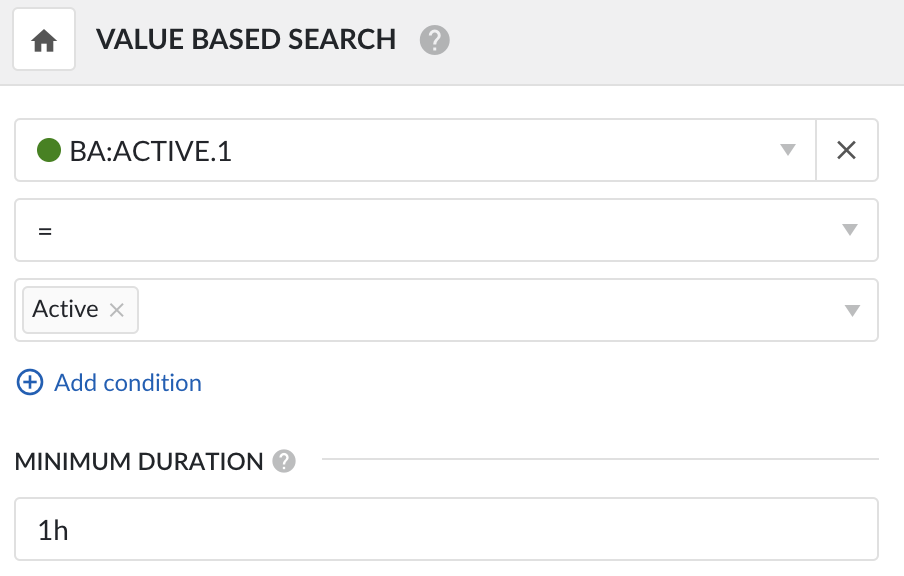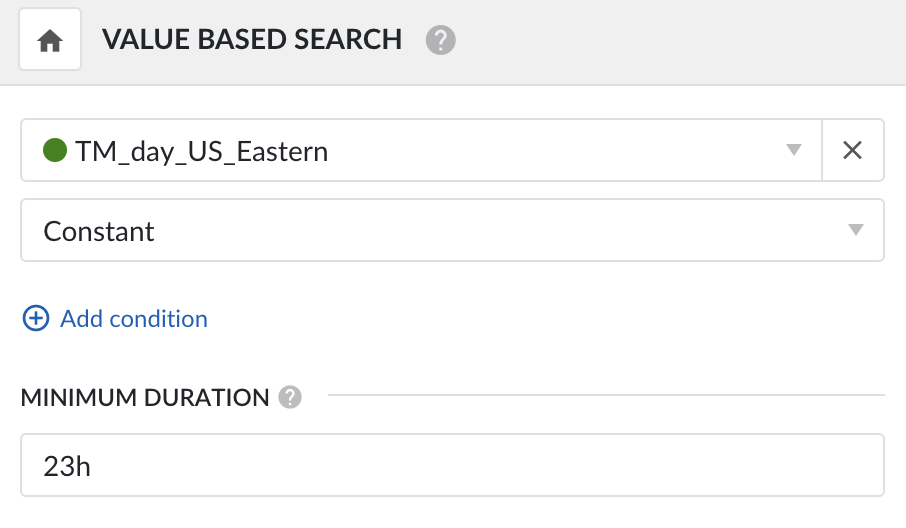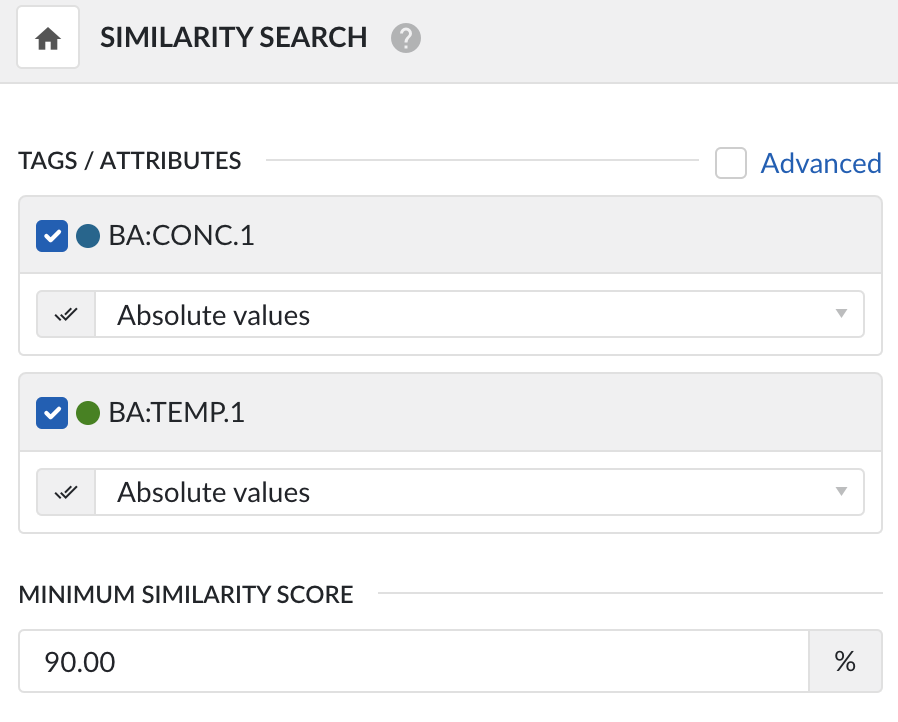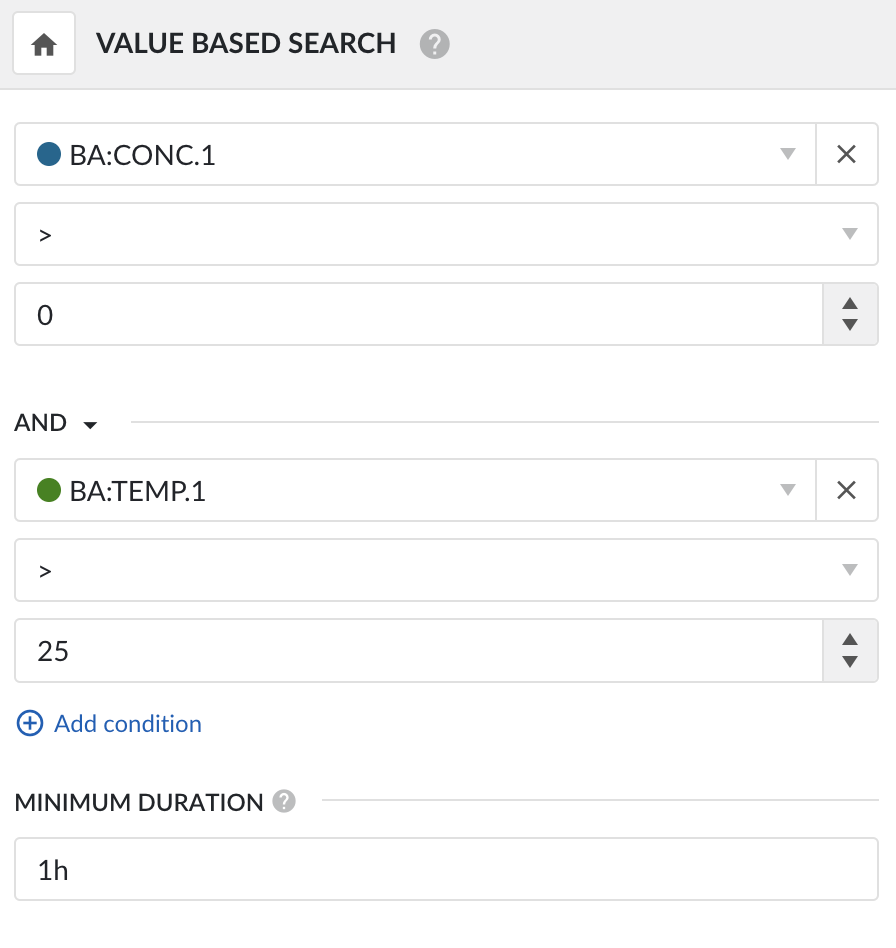Feature search
When performing a feature search, our goal is to collect a number of regularly recurring intervals. This contrasts with the event search, in which our aim is to find deviations from the normal process. Though both steps can use the same search functionalities, the aim is different. Here, we use the search to extract certain features from our dataset for further analysis. Below are typical examples of such features.
Batches
Production runs
Days, weeks, months, ...
Shifts
Startups
There are a number of ways to search for features. Below you can find some common options, ranked from most to least straightforward.
Value-based search for the specific state of a state tag. For example we could search for when our process is in the
Activestate.
Value-based search for a stepped tag remaining constant, yielding every step of the tag. This is a common way to search on the built-in time tags, a shift tag, an ID tag, ...

Similarity search for a recurring profile. An example would be to use the profile of one batch to search for others. This works best if batches always take the same time and follow a fixed profile.

Value-based search for a set of conditions marking a certain state. If no state tag is available, the alternative is to come up with a set of conditions on process tags which mark the desired state. If this set of conditions is complex, you might need to combine them in a binary state formula tag before searching.

When using a value-based search to retrieve features, setting the minimal duration can be a good initial filter criterion. It is a good practice to set the duration to the threshold below which you would consider results to be abnormal.
Very often, the first processing step will be to perform calculations on search results to rank or categorize our features. Sometimes we only want to keep a subset of results yielded by the search, in which case we typically want to filter the results based on duration or calculations. In complex situations, it might be required to fiirst use other searches as filters before extracting the desired features with a final search.